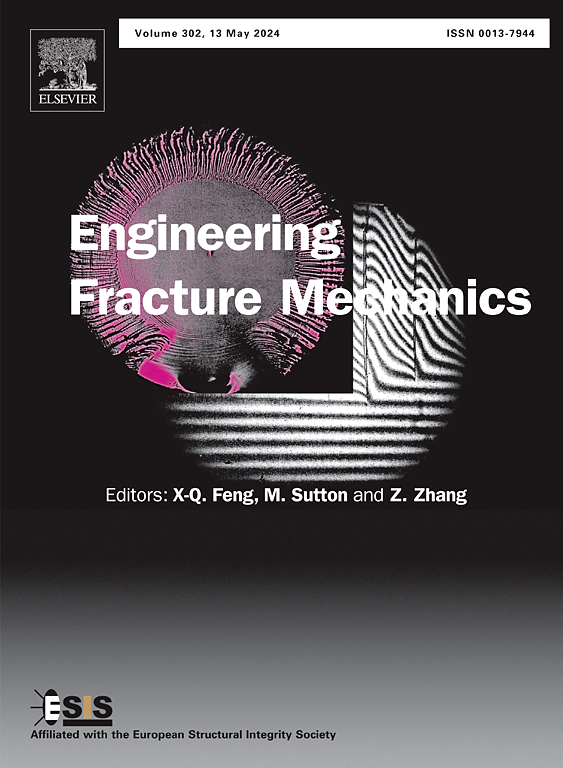高强度混凝土的多轴疲劳:通过模型解读冲压剪切试验响应
IF 4.7
2区 工程技术
Q1 MECHANICS
引用次数: 0
摘要
本文旨在填补混凝土多轴疲劳表征方面的空白,对冲穿剪切试验(PTST)的数据进行了全面的数值分析,该试验可控制测试韧带中的剪切和压缩组合载荷。要准确再现这种多轴构造中的降解过程,材料模型必须捕捉两种关键效应:(i) 亚临界脉动加载期间集料间的耗散行为;(ii) 试验韧带中由疲劳引起的三轴应力再分布。作者最近发表的 MS1 模型有效地纳入了这些特征,从而能够更深入地解释实验数据。前一种效应通过勒迈特疲劳假说被无缝集成到模型中,从而方便了一般演化方程的直接推导。后一种效应则通过微平面均质化框架得到有效体现。该模型对不同径向约束程度的单调剪切加载下 PTST 响应的预测与实验结果非常吻合。同样,模拟的疲劳响应也准确地再现了实验观察到的 S-N (沃勒)曲线。进一步的研究表明,该模型能够预测疲劳加载顺序的影响。基于热力学的公式对这种效应进行了能量解释,提供了在材料寿命期间归因于单个耗散机制的能量耗散的定量分解。研究表明,无论疲劳加载历史如何变化,损伤引起的耗散几乎保持不变。本文章由计算机程序翻译,如有差异,请以英文原文为准。
Multi-axial fatigue of high-strength concrete: Model-enabled interpretation of punch-through shear test response
This paper aims to fill the gap in multi-axial fatigue characterization of concrete by presenting a comprehensive numerical analysis of data from the punch-through shear test (PTST), which allows control over combined shear and compression loads in the tested ligament. To accurately reproduce the degradation process in this multi-axial configuration, a material model must capture two key effects: (i) dissipative behavior at the inter-aggregate level during subcritical pulsating loading and (ii) fatigue-induced tri-axial stress redistribution in the test ligament. The recently published MS1 model by the authors effectively incorporates these features, thereby enabling a deeper interpretation of the experimental data. The former effect is seamlessly integrated into the model using the Lemaitre-type fatigue hypothesis, facilitating the direct derivation of general evolution equations. The latter effect is efficiently represented through the microplane homogenization framework. The model’s predictions for PTST response under monotonic shear loading with varying levels of radial confinement align well with experimental results. Similarly, the simulated fatigue response accurately reproduces the experimentally observed S-N (Wöhler) curves. Further studies demonstrate the model’s ability to predict the effect of fatigue loading sequence. A thermodynamically-based formulation provides an energetic interpretation of this effect, offering a quantitative breakdown of energy dissipation attributed to individual dissipative mechanisms over the lifetime of the material. The studies show that damage-induced dissipation remains almost constant regardless of different fatigue loading histories.
求助全文
通过发布文献求助,成功后即可免费获取论文全文。
去求助
来源期刊
CiteScore
8.70
自引率
13.00%
发文量
606
审稿时长
74 days
期刊介绍:
EFM covers a broad range of topics in fracture mechanics to be of interest and use to both researchers and practitioners. Contributions are welcome which address the fracture behavior of conventional engineering material systems as well as newly emerging material systems. Contributions on developments in the areas of mechanics and materials science strongly related to fracture mechanics are also welcome. Papers on fatigue are welcome if they treat the fatigue process using the methods of fracture mechanics.

 求助内容:
求助内容: 应助结果提醒方式:
应助结果提醒方式:


